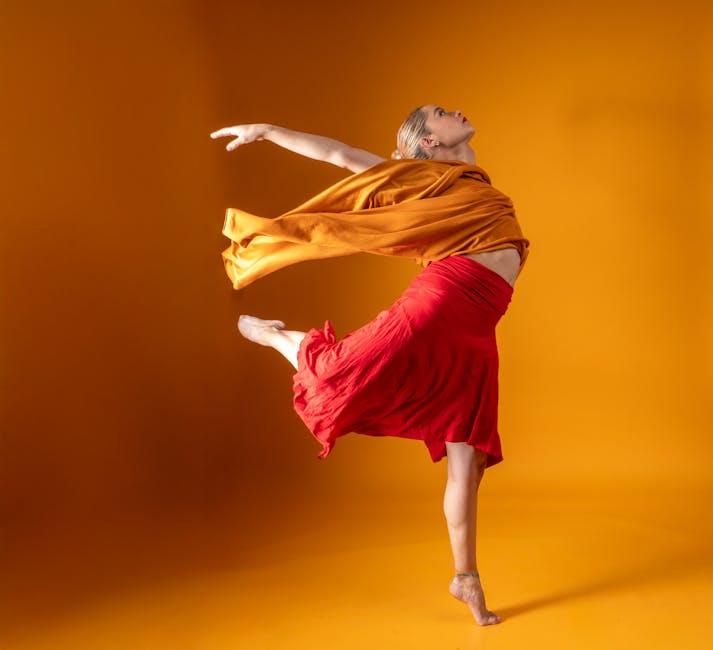In the ever-evolving landscape of cinematic storytelling, the quest to captivate audiences has led filmmakers to explore new horizons in technology. Among these advancements, high frame rate (HFR) filming techniques have emerged as a compelling frontier, promising to transform the viewer experience. By increasing the number of frames per second, HFR offers a smoother, more lifelike visual journey that challenges traditional perceptions of motion and realism. But how does this technological leap impact viewer engagement? As we delve into the intricate dance between cutting-edge innovation and audience connection, we uncover the nuanced ways in which high frame rate filming reshapes our visual narratives and invites us to see the world anew.
Capturing the Moment: The Art of High Frame Rate Filming
High frame rate (HFR) filming is an innovative technique that enhances the visual storytelling experience by capturing more frames per second than traditional filming methods. This approach provides a level of clarity and fluidity that can significantly increase viewer engagement. With HFR, fast-paced action sequences become smoother, and intricate details are brought to life with striking precision.
- Enhanced Realism: The increased frame rate offers a more lifelike representation, drawing viewers deeper into the narrative.
- Improved Motion Clarity: Fast movements are captured without blur, making scenes feel seamless and dynamic.
- Immersive Experience: By reducing motion artifacts, HFR filming can create a more immersive viewing environment.
While some filmmakers argue that HFR might detract from the traditional cinematic feel, its potential to captivate audiences with vivid and engaging visuals cannot be overlooked. This technique opens new doors for storytelling, allowing creators to explore and experiment with how stories are perceived and felt by the audience.

Beyond the Frame: How Speed Influences Viewer Perception
When exploring the impact of high frame rate (HFR) on viewer perception, it’s crucial to understand how speed shapes the cinematic experience. At its core, HFR enhances fluidity and clarity, creating an immersive reality that challenges traditional visual storytelling. Unlike conventional frame rates, HFR captures motion with unprecedented precision, often at 48, 60, or even 120 frames per second. This increase in frames minimizes motion blur and enhances details, allowing audiences to engage with each scene more vividly.
However, the heightened realism brought by HFR can also provoke varied viewer responses. Some find the ultra-clear imagery captivating, while others may perceive it as overly stark or unnatural. Consider these factors when implementing HFR in your projects:
- Emotional Connection: Does the clarity support or detract from the narrative?
- Genre Suitability: Action and fantasy may benefit, but drama might lose its traditional allure.
- Viewer Comfort: Be aware of potential sensory overload or visual fatigue.
Ultimately, the decision to use high frame rates should align with the intended viewer experience, balancing technical innovation with storytelling integrity.

Engagement Amplified: The Psychological Impact of Fluid Motion
High frame rate (HFR) filming introduces a mesmerizing clarity that transforms viewer interaction. As fluid motion unfolds on screen, the brain’s ability to process visual stimuli is enhanced, drawing audiences deeper into the narrative. The seamless transitions and lifelike portrayal enable viewers to connect more intimately with the content, fostering an immersive experience that feels almost tangible.
Consider the psychological impact of HFR: the reduction in motion blur and the precision of detail captivate the mind, keeping engagement levels elevated. Key benefits include:
- Enhanced realism: The hyper-realistic quality of HFR creates a more believable and engaging environment.
- Increased attention span: Viewers are less likely to be distracted as the crisp visuals hold their focus.
- Emotional connection: The fluidity of motion aids in conveying subtle emotional cues, deepening viewer empathy.
By leveraging these psychological effects, filmmakers can craft experiences that not only entertain but resonate profoundly with their audience.

Mastering the Craft: Recommendations for Optimal Frame Rate Usage
When it comes to achieving the perfect balance between smooth motion and viewer comfort, selecting the right frame rate is crucial. Higher frame rates can enhance clarity and reduce motion blur, making them ideal for action-packed sequences or sports coverage. This can lead to increased viewer engagement as the audience experiences a more immersive and fluid visual journey. However, it’s essential to consider the type of content and the intended emotional impact.
- 24 FPS: Offers a classic, cinematic feel, perfect for narrative storytelling.
- 30 FPS: Balances realism and tradition, often used for television broadcasts and online content.
- 60 FPS and above: Provides ultra-smooth motion, suitable for fast-paced action and gaming footage.
While higher frame rates can captivate viewers with their realism, they might also feel too polished for certain genres. It’s important to tailor your frame rate choice to the narrative style and platform, ensuring the technical aspects enhance rather than overshadow the storytelling.

